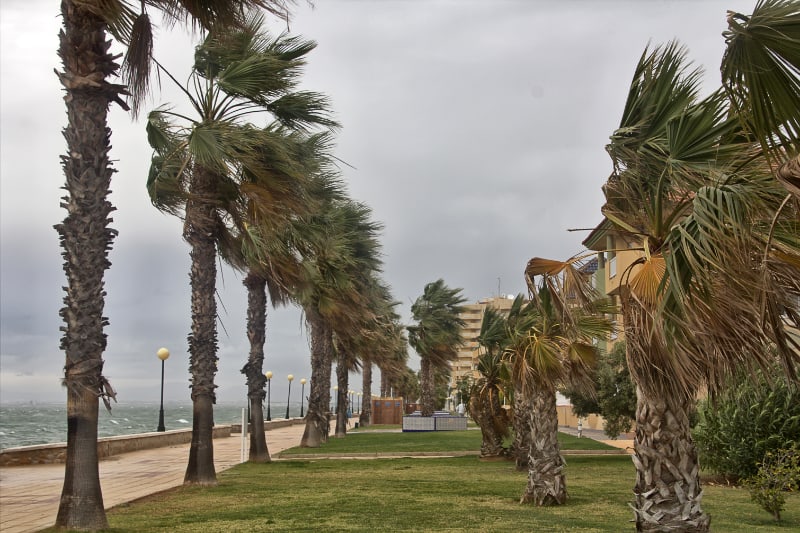Storm Damage Assessment
Solutions for managing a large loss due to a storm

Our management team has over 100 years of combined experience in the restoration industry. Covered Loss Consulting will help you tackle the countless details you’ll need to address at this critical and stressful time.
We know that, right now, you may feel over-whelmed, disoriented, incapable of returning to your home, incapable of returning to your normal business operation or personal life. And yet, life doesn’t stop-no matter how severe your loss.
We are damage consultants. And, every day, we help people just like you – people who find themselves in the unfortunate situation of recovering from an event that caused damage to their property.
Hurricane Safety
Hurricanes are among nature’s most powerful and destructive phenomena. On average, 12 tropical storms, 6 of which become hurricanes form over the Atlantic Ocean, Caribbean Sea, or Gulf of Mexico during the hurricane season, which runs from June 1 to November 30 each year. By knowing what actions to take before, during, and after a hurricane, you can increase your chance of survival. Below is some information on hurricane hazards, what to do before the storm, and what to have covered in your policy.
Hurricane Hazards
Storm surge is the abnormal rise of water generated by a storm’s winds. This hazard is historically the leading cause of hurricane related deaths in the United States. Storm surge and large battering waves can result in large loss of life and cause massive destruction along the coast. Storm surge can travel several miles inland, especially along bays, rivers, and estuaries.
Flooding from heavy rains is the second leading cause of fatalities during landfalling tropical cyclones. Widespread torrential rains from tropical storms and hurricanes often cause flooding hundreds of miles inland. This flooding can persist for several days after a storm.
Winds from a hurricane can destroy buildings and mobile homes. Debris, such as signs, roofing material, and items left outside can become flying missiles during hurricanes.
Tornadoes are often produced by landfalling tropical storms and hurricanes. These tornadoes typically occur in rain bands well away from the center of the hurricane.
Dangerous waves produced by a hurricane’s strong winds can pose a significant hazard to coastal residents and mariners. These waves can cause deadly rip currents, significant beach erosion, and damage to structures along the coastline, even when the storm is more than a 1,000 miles offshore.
Before the Storm
The best time to prepare for a hurricane is before hurricane season begins on June 1. It is vital to understand your home’s vulnerability to storm surge, flooding, and wind. Here is your checklist of things to do BEFORE hurricane seasons begins.
Know your zone: Do you live near the Gulf or Atlantic Coasts? Find out if you live in a hurricane evacuation area by contacting your local government/emergency management office or by checking the evacuation site website.
Write or review your Family Emergency Plan: Before an emergency happens, sit down with your family or close friends and decide how you will get in contact with each other, where you will go and what you will do in an emergency. Keep a copy of this plan in your emergency supplies kit or another safe place where you can access it in the event of a disaster. Start at the Ready.Gov emergency plan web page.
Put Together an Emergency Supplies Kit: Put together a basic disaster supplies kit and consider storage locations for different situations. Check emergency equipment, such as flashlights, generators and storm shutters.
Review Your Home Owners Insurance: Review your insurance policy to ensure that you have adequate coverage for your home.
What to Cover
Generally, covered properties are divided into four separate categories. The definitions of the property, and the extent of coverage vary by state, company and product. So it is important for the consumer to understand the definitions of the covered property. The four separate categories for your home, as defined by insurance companies, are:
1. Dwelling – The structure of the house is considered a covered property.
2. Other Structures – These are structures that are separate from the house, or connected to the house by a fence, wire or other form of connection, but not otherwise attached to the dwelling, such as a tool shed or detached garage.
3. Personal Property – The contents of your home are your personal property. This includes furniture, appliances and clothing. Not all personal property is covered. Items more appropriately covered under different forms of insurance may have limited or no coverage for loss. These items include, but are not limited to, money, jewelry and firearms.
4. Loss of Use – When a loss occurs due to a covered peril and the dwelling becomes uninhabitable, the cost of additional living expenses is covered. Reimbursement of additional living expenses covers the cost to the insured for maintaining a normal standard of living.
